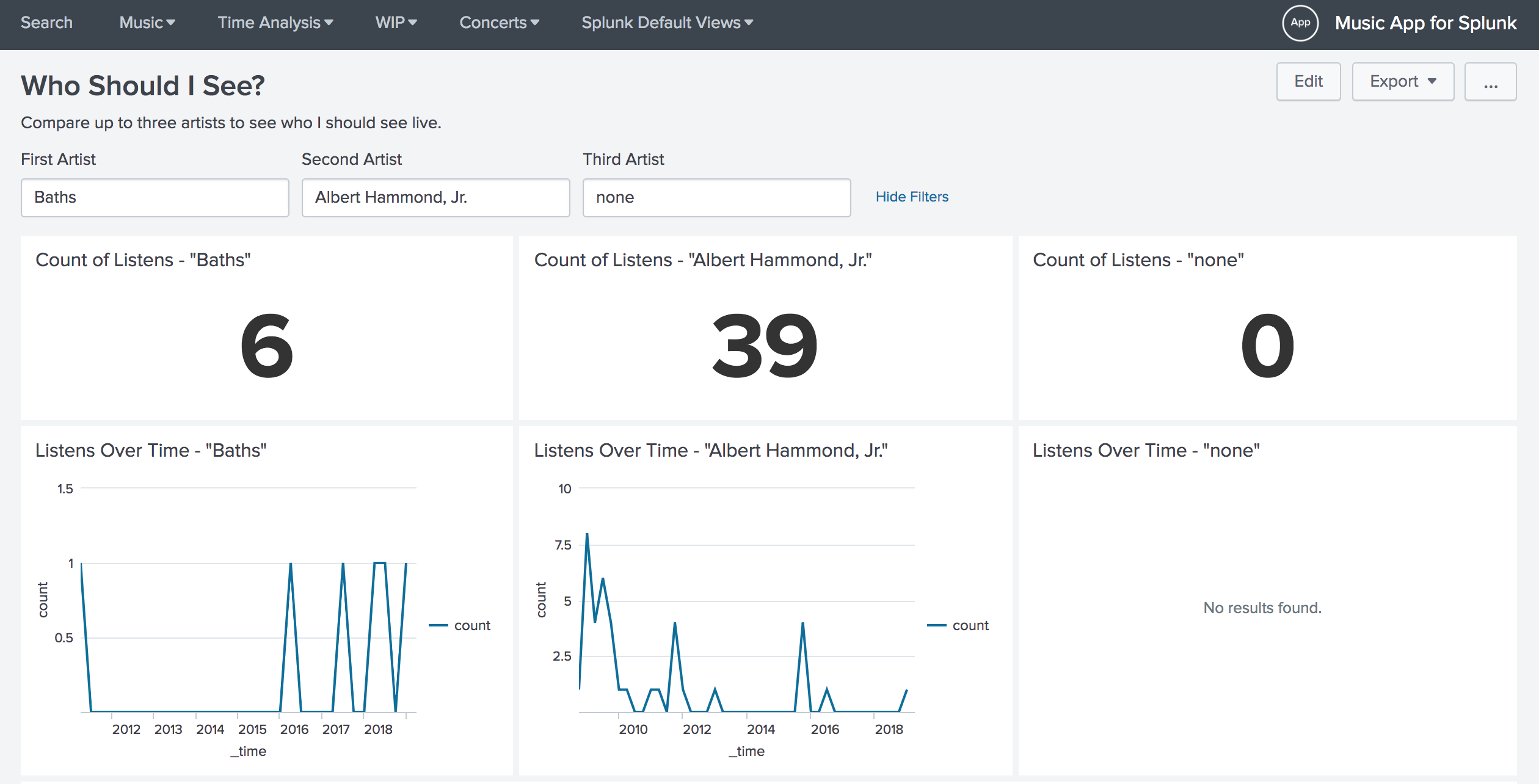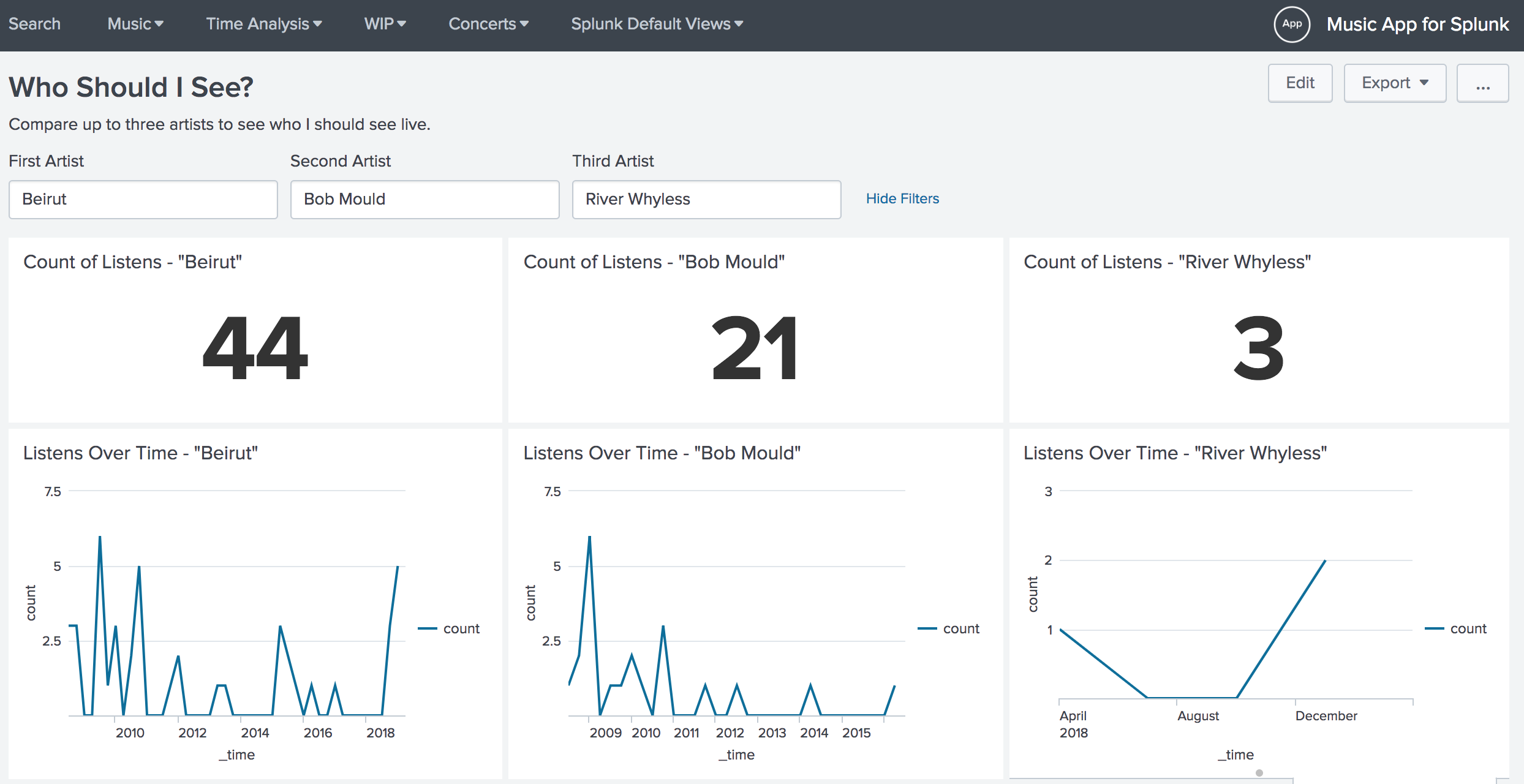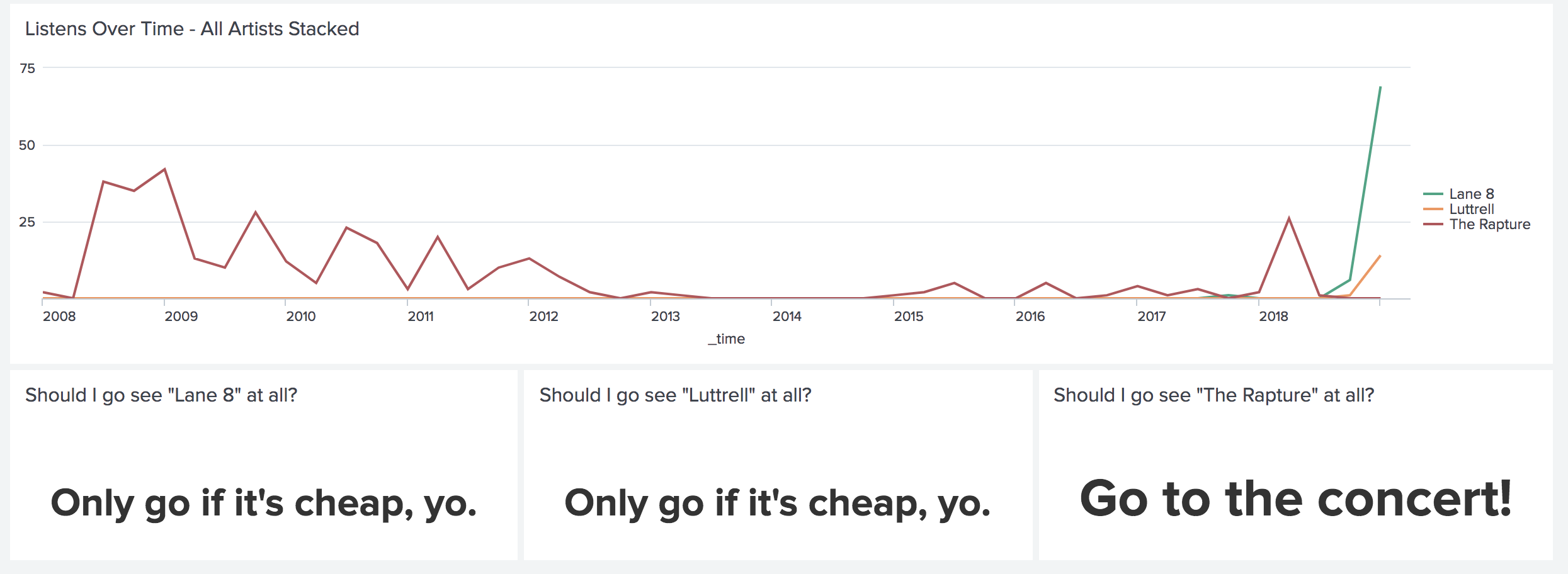Making Concert Decisions with Splunk
The annual Noise Pop music festival starts this week, and I purchased a badge this year, which means I get to go to any show that’s a part of the festival without buying a dedicated ticket.
That means I have a lot of choices to make this week! I decided to use data to assess (and validate) some of the harder choices I needed to make, so I built a dashboard, “Who Should I See?” to help me out.
First off, the Wednesday night show. Albert Hammond, Jr. of the Strokes is playing, but more people are talking about the Baths show the same night. Maybe I should go see Baths instead?

If I’m making my decisions purely based on listen count, it’s clear that I’m making the right choice to see Albert Hammond, Jr. It is telling, though, that I’ve listened to Baths more recently than him, which might have contributed to my indecision.
The other night I’m having a tough time deciding about is Saturday night. Beirut is playing, but across the Bay in Oakland. Two other interesting artists are playing closer to home, Bob Mould and River Whyless. I wouldn’t normally care about this so much, but I know my Friday night shows will keep me busy and leave me pretty tired. So which artist should I go see?

It’s pretty clear that I’m making the right choice to go see Beirut, especially given my recent renewed interest thanks to their new album.
I also wanted to be able to consider if I should see a band at all! This isn’t as relevant this week thanks to the Noise Pop badge, but it currently evaluates if the number of listens I have for an artist exceeds the threshold that I calculate based on the total number of listens for all artists that I’ve seen live in concert. To do this, I’m evaluating whether or not an artist has more listens than the threshold. If they do, I return advice to “Go to the concert!” but if they don’t, I recommend “Only if it’s cheap, yo.”
Because I don’t need to make this decision for Noise Pop artists, I picked a few that I’ve been wanting to see lately: Lane 8, Luttrell, and The Rapture.

While my interest in Lane 8 has spiked recently, there still aren’t enough cumulative listens to put them over the threshold. Same for Luttrell. However, The Rapture has enough to put me over the threshold (likely due to the fact that I’ve been listening to them for over 10 years), so I should go to the concert! I’m going to see The Rapture in May, so I am gleefully obeying my eval statement!
On a more digressive note, it’s clear to me that this evaluation needs some refinement to actually reflect my true concert-going sentiments. Currently, the threshold averages all the listens for all artists that I’ve seen live. It doesn’t restrict that average to consider only the listens that occur before seeing an artist live, which might make it more accurate. That calculation would also be fairly complex, given that it would need to account for artists that I’ve seen multiple times.
However, number of listens over time doesn’t alone reflect interest in going to a concert. It might be useful to also consider time spent listening, beyond count of listens for an artist. This is especially relevant when considering electronic music, or DJ sets, because I might only have 4 listen counts for an artist, but if that comprises 8 hours of DJ sets by that artist that I’ve listened to, that is a pretty strong signal that I would likely enjoy seeing that artist perform live.
I thought that I’d need to get direct access to the MusicBrainz database in order to get metadata like that, but it turns out that the Last.fm API makes some available through their track.getInfo endpoint, so I just found a new project! In the meantime I am able to at least calculate duration for tracks that exist in my iTunes library.
I now have a new avenue to explore with this project, collecting that data and refining this calculation. Reach out on Twitter to let me know what you might consider adding to this calculation to craft a data-driven concert-going decision-making dashboard.
If you’re interested in this app, it is open sourced and available on Splunkbase. I’ll commit the new dashboard to the app repo soon!